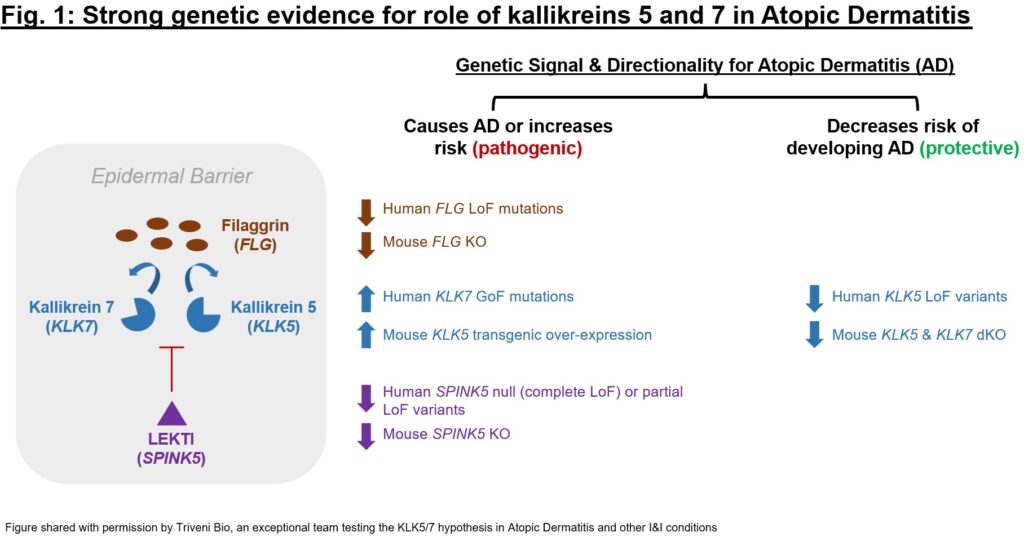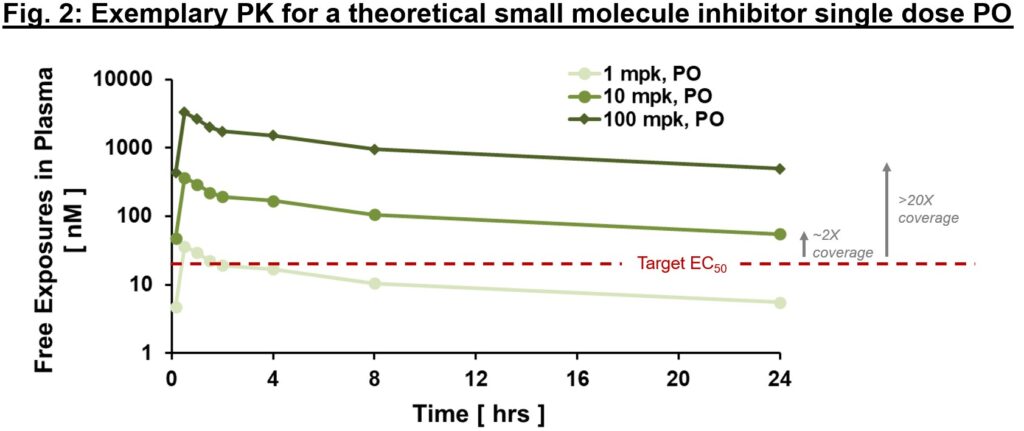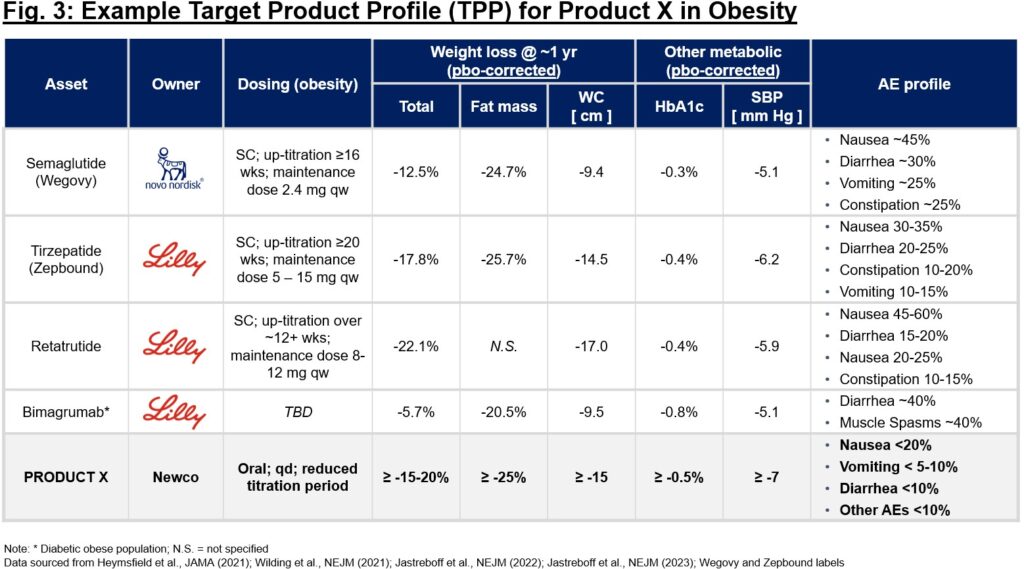By Aimee Raleigh, Principal at Atlas Venture, as part of the From The Trenches feature of LifeSciVC
Ever wondered what goes into diligencing a new idea, program, company, or platform? While each diligence is unique and every investor will have their own approach, below are some considerations that may be more “typical” in a diligence. I will emphasize the obvious disclaimer before diving in – this framework is merely meant to be exemplary and there are always nuances and exceptions unique to each diligence. Additionally, for illustrative reasons this is geared towards a single target / product focus vs. broader platform diligence, though many of these mental models will apply for selecting targets and indications for a platform. Sometimes people are disappointed to learn there is no official checklist investors use during a diligence, but that’s the beauty of working in the complex space of early-stage therapeutics!
How does one think about therapeutic relevance for a new target? This will be an exemplary look at things I typically consider when diligencing a new opportunity for company creation, including key concepts and mental models.
Target validation: Do we believe the target(s) plays a central role in disease biology and that modulation will modify disease?
There is a continuum of evidence for a given target – at one end are novel targets with some evidence of importance in disease, and at the other end are “de-risked” targets where the biology is precedented with an approved product or late-stage clinical asset(s). I will note that “de-risked” is never fully risk-free in therapeutics investing, as even precedented mechanisms hit stumbling blocks in preclinical or clinical development. The level of comfort with novelty of a target hypothesis might vary for an investor depending on the stage at which they typically invest. In the early-stage setting, we diligence and conceive of our own newco ideas across the spectrum of validation. There is nothing more exciting than digging into a new target and trying to develop a thesis on whether modulation may be impactful in disease. Is a novel target at the inflection point where enough evidence is available to suggest it may prove to be a compelling drug? In the absence of a clinical trial result or FDA label to point to, how does one create the case and target product profile (TPP) around a new target?
In order to start building a case for or against a target, I like to start with genetics – first human and then mouse. Are there known genetic diseases associated with the target? If so, are these Mendelian or complex polygenic diseases, and if the former is the inheritance pattern autosomal recessive or autosomal dominant? Is the functionality of mutations known? How heterogeneous are the observed phenotypes? Answers to the above questions help to develop a thesis around any allelic “dose response” – for example if heterozygotes exist with a mild phenotype and homozygous or compound heterozygous individuals have more severe disease. In addition to Mendelian genetics, what do we know about any genetic modifiers – any compelling findings from GWAS, WES, etc.? Are the phenotypes associated with mutations discordant or do they point towards a potential underlying biology with compelling effect size? Do mouse genetics line up with the human story? If any confounding data, is there a plausible rationale for the divergent phenotypes?
Once an individual target is evaluated, I might expand to a broader pathway. Are there nearby targets up- or down-stream from the novel target of interest that have genetics validation? Overall, are the “signals” from this screen suggestive of plausible biology? Genetic data for the target can offer a first glimpse at whether there is a tractable hypothesis to dig into. One example of such a genetics exercise is represented in Fig. 1, which depicts the sizeable amount of genetics evidence for kallikreins 5 and 7 (KLK5 and 7), two serine protease targets with a role in barrier dysfunction and immune dysregulation. For KLK5 and KLK7 as well as their endogenous regulator (LEKTI, encoded by SPINK5) and one of their substrates (filaggrin, FLG) there is evidence that KLK5 and 7 up-regulation is pathogenic and down-regulation protective in epidermal barrier dysfunction (especially for Atopic Dermatitis). The cumulative genetics evidence was so compelling that the exceptional team at Atlas portfolio company Triveni Bio is targeting both kallikreins in a dual antagonist antibody currently in IND-enabling studies.
Human and mouse genetics can inform not only efficacy but also safety. The ideal target is one where modulation will not drive adverse phenotypes in healthy individuals, which is important if one intends on trialing in healthy volunteers in Phase 1 but also gives comfort for chronic target modulation. If adverse events are anticipated, it is important to understand gene dosage for such an effect (e.g., adverse profile seen in homozygous null individuals but not in heterozygous carriers?) and whether a molecule’s pharmacology can help to mitigate safety risk. Finally, as part of a broader pathway analysis, consider potential implications for selectivity. Especially for oligo or small molecule discovery and development, it’s important to understand whether there are highly homologous sequences or proteins that may be impacted by a given therapeutic approach.
While supportive genetics aren’t absolutely required to move forward with a novel target, they certainly help to drive conviction in potential clinical relevance. Suggested resources for this first pass genetics diligence include OMIM, GWAS Catalog, DisGeNET, OpenTargets, Genebass, and the International Mouse Phenotyping Consortium.
Directionality and Druggability: Does the proposed “direction” of insult and therapeutic intervention make sense, and can we drug our novel target with a compelling modality?
From the above genetics exploration, is the functional impact known? In most simplistic terms this can usually be reduced to “gain of function” (GoF) vs. “loss of function” (LoF) effect, but can also be quite nuanced (e.g., some phenotypes can be driven by both LoF or GoF mutations, or functionality can be difficult to characterize for variants). Once a direction of pathology is determined, how might one intervene?
- For inhibition, is a small molecule or antibody-based approach best, or is the etiology tissue-centric so that an oligo, gene editing, or other strategy might address (e.g., in liver, in CNS)?
- To impart “gain-of-function” pharmacology, consider inducing or up-regulating expression (e.g., with gene editing or gene therapy, enzyme replacement therapy), agonism (e.g., with antibodies), or correction (e.g., in the case of CFTR for Trikafta). Consider whether there is enough (partially functional) target that remaining to agonize or correct – if not, can wild-type up-regulation address the pharmacology, or does the target protein need to be entirely replaced?
The modality will need to be paired with the “geography” in which disease modification is required. Factoring in both efficacy and safety, is this a systemic or localized approach? Are there delivery approaches to help achieve more localized delivery? While delivery approaches have rapidly advanced over the past few years (e.g., TfR1 brain or muscle “shuttles” enabling higher tissue exposures and activity for antibodies, enzymes, and / or oligos), there are still modalities and tissues for which delivery is the key challenge for successful therapeutic intervention.
Pharmacology: Is this the “right” molecule, does it get to the desired location in the body for the intended amount of time, and does the effect of the molecule on the body make sense?
To achieve the desired biology, we must have conviction that a therapy can (1) get to the desired target with sufficient exposures over a certain period of time (pharmacokinetics/PK readout), (2) interact with the target in the desired fashion, enacting proximal and distal “downstream” biology (pharmacodynamics/PD readout), and (3) modify the disease in a way to alter the clinical course (efficacy readout). When diligencing a new target, if there are “tool” molecules with data in the literature, gaining confidence in an exposure/PD/efficacy relationship can help build confidence in the target and mechanism. In the best-case scenario, one can build a thesis on exposure multiples over EC50 required to effect desired biology, as in Fig. 2., based on “tool” molecule precedent.
Given pharmacology can be a topic of its own, a colleague in the Atlas portfolio, Haojing Rong, has helped author a companion pharmacology blog post – if of interest in double clicking on this topic, please stay tuned for tomorrow’s post!
One point to emphasize in the pharmacology diligence is availability and suitability of biomarkers. These can range from “proximal” target engagement readout (e.g., PCSK9 transcript knockdown) to more distal pharmacodynamic measures (e.g., LDL-c lowering). Often for a new target, the biomarker thesis will need to be developed and validated with in vitro and in vivo assays. When diligencing a new mechanism, consider carefully the totality of biomarkers available as well as which will be prioritized for in vitro screening assays and in vivo PD readouts. Ideally multiple different PD markers can be leveraged to improve translational read-through and reduce likelihood of drug discovery due to an erroneous or assay-driven signal. If you are evaluating a novel target without a clear biomarker strategy, consider the heavier lift that will likely be involved in early discovery assays.
Path to clinical “Proof of Concept” (PoC): What does the path look like to fund discovery and development of a program through clinical efficacy readouts?
Different investors will have comfort with varying “starting points” in the drug discovery funnel; company builders will likely have experience across the spectrum from target nomination to Phase 2 asset in-license, while other investors may prefer to invest at development candidate (DC) nomination stage or later. What tends to be unifying is investors’ desire to fund through key de-risking milestones in a given financing. Frequently, de-risking is perceived as “proof of concept” (PoC) in the clinic for the lead asset, which is typically a Phase 1b or Phase 2a trial in a desired patient population with a registration (or directionally translational to registration) endpoint readout. Certainly there are other inflection points that may be meaningful, and these vary depending on whether there is any clinical precedent for the mechanism or the extent of validation possible via genetics and pharmacology models. These alternative inflection points include IND clearance, Phase 1 MAD data (which, especially for indications such as obesity where healthy volunteer data is well-precedented as a benchmark, can drive substantial value), and Phase 1 safety datasets if adverse events are a concern for the mechanism.
Ultimately investors will want to gain comfort that there is a well-conceived plan for de-risking the target thesis, and the plan can be financed with venture dollars. When considering a new target hypothesis, consider whether there are any opportunities for acceleration in the form of “tool” compounds or starting substrate (from the patent or other literature) for a more targeted medicinal chemistry, antibody discovery, etc. campaign. Alternatively, are there potential existing assets that may be available for in-licensing, especially if the potential licensor has pivoted strategic directions (i.e., asset has not been de-prioritized due to safety or efficacy)?
Ultimately, having a clear view of what a PoC trial looks like (desired patient population and key inclusion/exclusion criteria, primary vs. secondary endpoints, length of trial, typical recruitment timelines, etc.) helps in planning, even in the early discovery stage. Trial considerations will ultimately inform nonclinical studies such as GLP tox, and will serve as the basis for timeline and budget discussions around a fundraise. When considering a novel target thesis, consider carefully the desired PoC inflection point through which you hope to fund through, and work backwards form there in developing the earlier nonclinical and clinical requirements to enable that PoC trial.
Product opportunity: If a drug is successfully discovered and developed, will it matter to patients and other stakeholders?
The product thesis is of great importance in the planning stage of any company (regardless of whether asset- or platform-centric). Consider anticipated time to market (not just time to the clinic), competitiveness of the mechanism itself and broader competition for the indication at large, and potential impact on patient lives should discovery and development be successful. It is essential to crystallize a target product profile (TPP) early in the process of diligencing a new target, even if completely theoretical. Using a “base case” vs. “upside” TPP, one can (in)validate the therapeutic benefit hypothesis and confirm whether it will be differentiating if drug discovery efforts are successful. This TPP can serve as substrate when pressure-testing a thesis with KOLs, patients, investors, and others. If you can’t garner excitement on the TPP alone, that might be a sign to reconsider the unmet need and differentiation thesis. Consider Fig. 3 – early benchmarking of competitive profiles can help elucidate the label characteristics that make a new profile attractive or not. In this case, given the crowded obesity market, confidence in a best-in-class profile that will offer a differentiated solution to patients and will garner eventual adoption by physicians and reimbursement by payers is critical before embarking on discovery and development.
To sum it up, every diligence usually involves some flavor of target validation, confidence the target can be drugged in the right direction, belief in the pharmacology (or clear path to proving or disproving the PK/PD/efficacy relationship), path to PoC that can be financed with venture dollars, and conviction that the product opportunity merits the time and investment required to bring a new medicine to patients. Of course, each target thesis has its own nuance and there is no one-size-fits-all checklist we go through as investors. If you are considering a new product concept or company idea, hope this piece helps in the brainstorming!
Acknowledgements: I would like to thing Haojing Rong for collaborating with me on this double-header blog post. Please check out the sister piece – a deep dive on pharmacology – which will post tomorrow!








